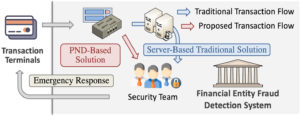Algorithm and prototype for machine-learning-based financial fraud detection using programmable network devices

Applications: Financial fraud detection for banks, hedge funds, security providers and financial supervision organisations
| Features | Benefits |
|
|
|
|
|
|
|
|
Available for:
- Licensing
- Co-development
- Consulting
about this technology
© Oxford University Innovation

